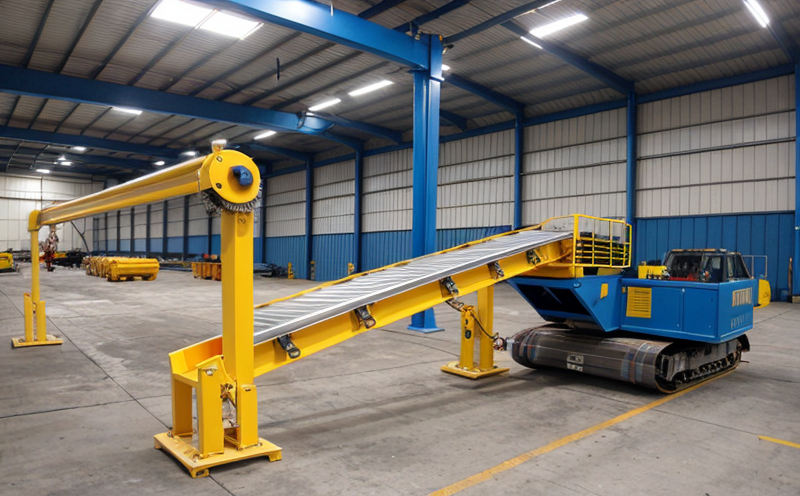BS EN 14985 Mechanical Resistance Testing of Lifting Equipment
The mechanical resistance testing as specified in BS EN 14985 is a critical component in ensuring the safety and reliability of lifting equipment used in mining operations. This standard outlines stringent requirements for assessing the structural integrity and durability of hoisting, conveying, and lifting systems under various stress conditions. The testing process involves subjecting components to simulated real-world loading scenarios intended to mimic operational stresses encountered during use.
The primary focus of this service is on the mechanical resistance assessment of lifting equipment designed specifically for mining applications. These systems are subjected to rigorous tests that simulate typical working conditions, ensuring they meet stringent safety and performance criteria as defined by international standards such as BS EN 14985 and other relevant industry guidelines.
The testing methodology encompasses a range of procedures aimed at evaluating the load-bearing capacity, fatigue resistance, and overall structural robustness of lifting equipment. This includes the use of specialized test rigs capable of applying controlled loads to simulate the maximum expected working conditions. The tests are conducted in accordance with the prescribed standards to ensure that the equipment not only performs its intended function but also meets stringent safety requirements.
For quality managers and compliance officers, this service provides assurance that lifting equipment used in mining operations complies with international best practices. R&D engineers benefit from detailed insights into material properties and design considerations that can lead to innovations in product development. Procurement teams gain confidence knowing the suppliers they choose adhere to strict quality control measures.
The testing process involves several key steps. Specimens of lifting equipment are prepared according to specific guidelines provided by BS EN 14985. These specimens are then subjected to various loading scenarios that simulate real-world conditions, including static and dynamic loads. The instrumentation used in these tests includes high-precision load cells and strain gauges to accurately measure stress levels and deformation.
The results of the mechanical resistance testing are meticulously documented and reported according to standardized formats prescribed by BS EN 14985. These reports serve as critical documentation for compliance with regulatory requirements and provide valuable information for continuous improvement in product design and manufacturing processes.
Compliance with this standard ensures that lifting equipment used in mining operations is safe, reliable, and capable of withstanding the harsh environmental conditions often encountered in underground mines. This not only enhances operational efficiency but also significantly reduces the risk of accidents and equipment failures.
- Load Simulation: Real-world loading scenarios are simulated to assess structural integrity under extreme conditions.
- Material Inspection: Close examination of materials used in lifting equipment for durability and strength.
- Strain Measurement: Use of sensors to monitor deformation during testing.
- Load Cell Calibration: Ensuring accuracy in load measurement.
In summary, BS EN 14985 mechanical resistance testing is an indispensable service for mining companies aiming to ensure the safety and reliability of their lifting equipment. It provides a robust framework for evaluating the performance of hoisting and conveying systems under simulated operational conditions, ensuring compliance with international standards and enhancing overall safety and efficiency.





